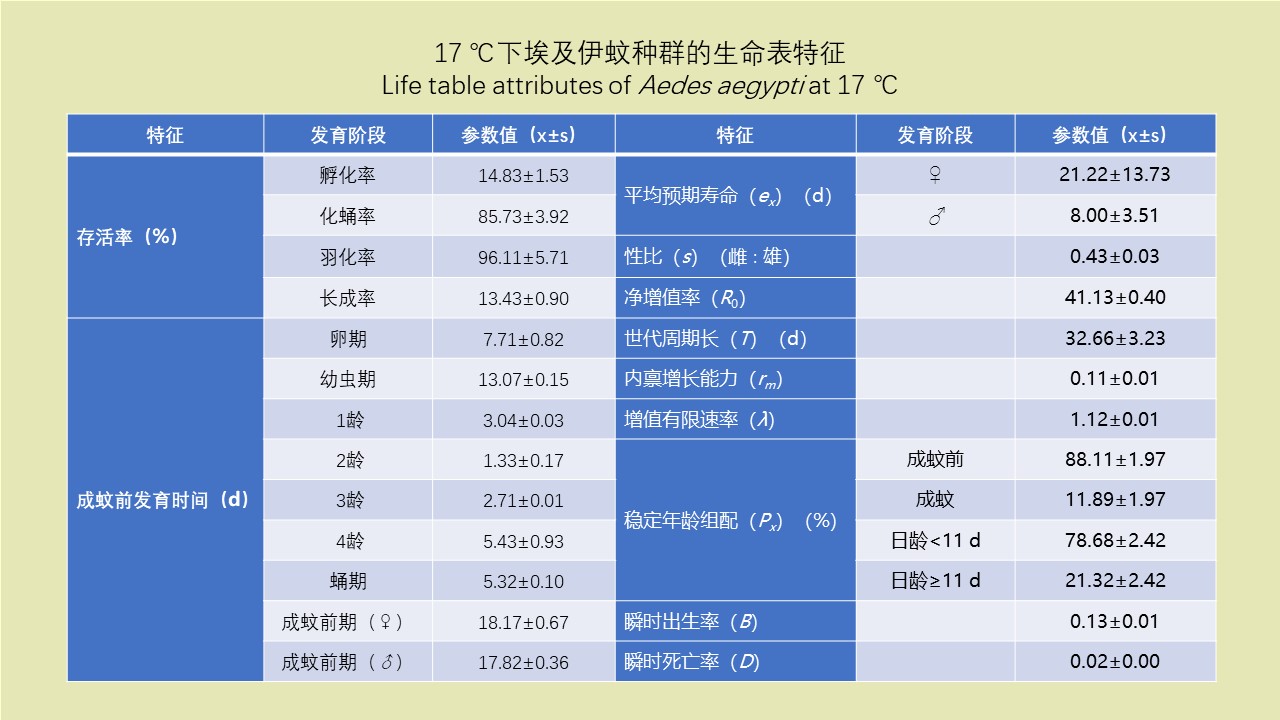 PDF(669 KB)
PDF(669 KB)


低温条件下埃及伊蚊生命表研究
赵美杰, 郭宁宁, 刘起勇, 金华锋, 孟凤霞, 刘小波, 郭玉红
中国媒介生物学及控制杂志 ›› 2022, Vol. 33 ›› Issue (6) : 771-775.
 PDF(669 KB)
PDF(669 KB)
 PDF(669 KB)
PDF(669 KB)
低温条件下埃及伊蚊生命表研究
 ({{custom_author.role_cn}}), {{javascript:window.custom_author_cn_index++;}}
({{custom_author.role_cn}}), {{javascript:window.custom_author_cn_index++;}}Life table of Aedes aegypti at low temperature
 ({{custom_author.role_en}}), {{javascript:window.custom_author_en_index++;}}
({{custom_author.role_en}}), {{javascript:window.custom_author_en_index++;}}
| {{custom_ref.label}} |
{{custom_citation.content}}
{{custom_citation.annotation}}
|
/
| 〈 |
|
〉 |